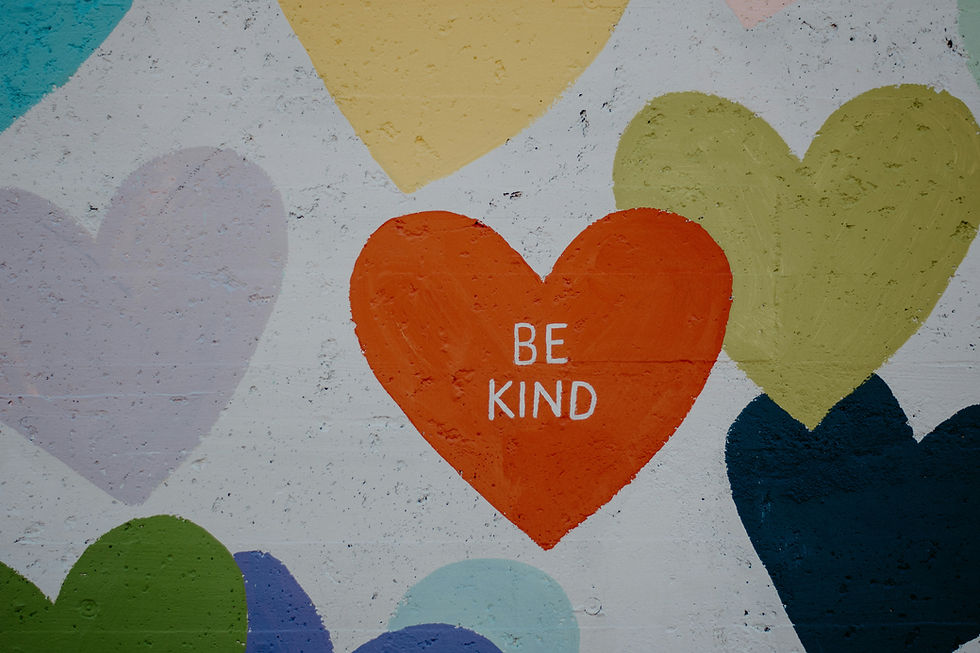Why I Hike by Emma Mulcahy
- Steph Murphy
- May 11, 2023
- 3 min read
Updated: May 15, 2023
This is why I hike.
When I hike, I still feel the physical and mental heaviness of my invisible illness, Behçet’s Disease
But I’m also so distracted by the wonders of nature, the heaviness leaves me be, even if just for a few minutes. This is normally when I reach the summit of whatever hill I’m (slowly) scrambling upon.
The burdens are all but gone as I’m dropped right into nature's playground. My senses go into overdrive.
I’m mesmerised by the colours of the sky, overwhelmed with the cold snap of winds against my face, overjoyed with the feeling of accomplishment that takes over my brain and even a limp ham sandwich tastes so much better when you’re on top of the world.
And just for a few minutes, I forget about the burning ulcers, the burning joints, the burning tears, and the burning voice in my head telling me that I’ll pay for it the next day.
It doesn’t happen every time, not every walk is like this. Sometimes I’m beaten and that’s ok. But when I make it up, I’m reminded of why I keep going back to it.
It’s when the pain that is living with Behçet’s Disease is stomped upon. When the chronic illness that literally takes my voice away, dampens my spirit, and steals my energy, and work opportunities, has to wait before it takes over again.
This is why I hike.
It's well known that walking and being outdoors play a huge role in nurturing our mental health. The reason I walk now more than ever is that it’s become a crucial part of my physical, but mostly mental, health and pain management. I’m so lucky to still be able to do it, even if it is extremely difficult at times with joint pain, heat and eye sensitivity and mouth ulcers.
If it’s something you’re thinking of getting into or if you’re keen to get back on the trails after a break, here are my personal top tips for making something I love, that bit more manageable for those of us with chronic and invisible illnesses:
1. Hiking poles are amazing and help to share your weight more evenly across your body and are great for protecting your knees. 2. Do lots of research on the route beforehand. How many miles? What's the terrain like? Is it a typically busy route? Are there toilets at the beginning and end of the route? 3. Start small. Not every hike needs to be huge. And if you do start a big one and it’s not to be, listen to your body. There’s always a next time. I always plan nothing for the day before and after a hike, to rest. 4. Don’t be afraid to stop lots and take rests throughout and make sure you’re able to tell the people you’re with that you need to rest 5. Wear proper gear, from head to toe, always. Make sure to bring sun protection, any meds you need, lots of water and easy-to-carry food. **These are just some personal tips, different people will need different things. Always consult your GP before heading for the hills if it’s been a while.
About the author
Emma is a remote administration assistant and invisible illness advocate and community founder. She runs Spoonies at Work, a membership for people who work alongside symptoms of chronic and invisible illness. She is also about to launch her blog ‘Ramble & Rest’ which focuses on adventures big and small, and finding rest in the outdoors and nature.
My personal/outdoorsy Instagram is @emmamulburns My LinkedIn which is Emma Burns Behcets UK fundraiser I'm doing https://www.justgiving.com/fundraising/emma-mulburns Behcets UK website https://behcetsuk.org/










Comments